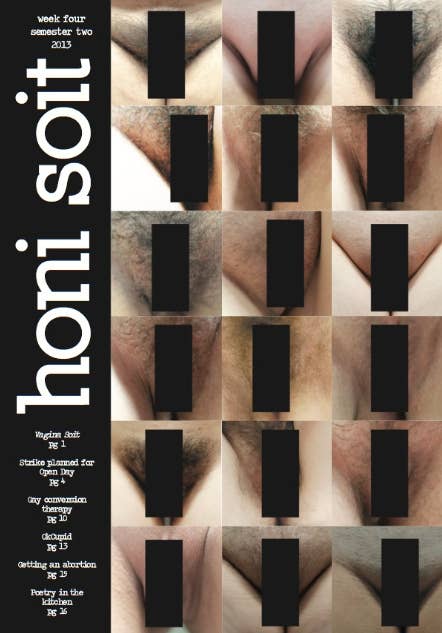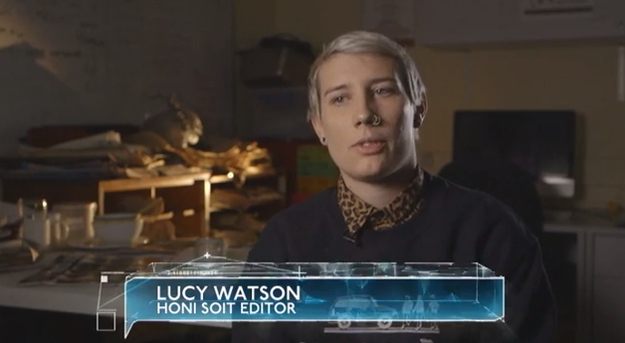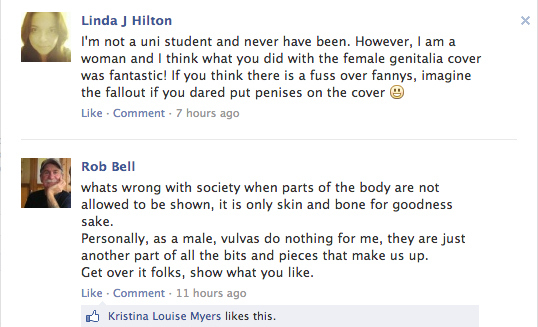This is the censored version of the cover of Honi Soit, Sydney University's student newspaper. The issue was pulled after it was deemed too offensive.

You can click here to see the very NSFW version of the cover.
The issues featuring the 18 vulvae were seized for being possibly criminally indecent.
View this video on YouTube
With the school feeling that the black censor bars weren't enough and possibly breaking Australian censorship laws.

The seizing and shredding of the offensive issues by the school, however, proves to the publication's staff that vaginas are, in fact, stigmatized by society.

As news of the issue's censorship by the school spread, Honi Soit's website went down, forcing the editorial staff to post a lengthy letter to their readers on their Facebook page:
The vaginas on the cover are not sexual. We are not always sexual. The vagina should and can be depicted in a non-sexual way – it's just another body part. "Look at your hand, then look at your vagina," said one participant in the project. "Can we really be so naïve to believe our vaginas the dirtiest, sexiest parts of our body?"
We refuse to manipulate our bodies to conform to your expectations of beauty. How often do you see an ungroomed vulva in an advertisement, a sex scene, or in a porno? Depictions of female genitalia in culture provide unrealistic images that most women are unable to live up to. "Beautiful vaginas are depicted as soft, hairless, and white. The reality is that my vagina is dark and hairy, and when it isn't it is pinkish and prickly," said one of the participants in the project. We believe that the fact that more than 1200 Australian women a year get labioplasty is a symptom of a serious problem. How can society both refuse to look at our body part, call it offensive, and then demand it look a certain way?
You can read the full letter here.
Editor Hannah Ryan wrote about the experience for dailylife.com.au.

In Ryan's article, published on Thursday, she reiterated the point that the cover was not made to be sexual in any way.
We also wanted to say that women need not always be sexual, to be on display for men. These were not the bare, tucked-in vulvae of pornography, but the full gamut of ordinary women.
Covering those images and then seizing all printed copies from the public eye because of a fear that the images were criminally "indecent" perversely reinforced everything we were fighting. Acted out in this way, the law told women that their bodies were offensive and that they had to hide.
The publication's Facebook page is full of supportive comments from readers all over the world.


